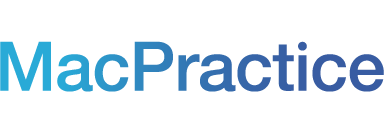
Doctors want to run their practices with Apple technology. Fortunately, it has never been more accessible or more affordable. Doctors (along with everyone else) have iMacs, iPhones, and other Apple products at home because of the user-friendly design, ease of use, and longevity. Over 64% of the US population now owns an Apple product of some kind (iPhone, iMac, iPad, and so on), and the average American household owns 2.6 Apple products.
Doctors do not just appreciate Apple products as smart consumers; these tools can be essential for scheduling, charting, storing patient records, and billing. While many things have changed about doctor's waiting rooms in the recent past, generally speaking, when a patient arrives in a doctor's office, they are usually handed a clipboard and required to complete multiple lengthy forms each visit. Once the patient finishes, they return the paperwork to the staff and take a socially-distanced seat. After the staff disinfects the clipboard numerous times a day between each patient, the team manually enters the information into the practice management software, updating it as necessary. Health history forms and medication forms are added to the clinical or EHR software separately. Not only is does this process require lots of paper and duplicate work, but it also may not even be necessary if there are no updates to the patient's existing information. Altogether, it is a real time-waster for patients, doctors, and staff. Plus, it makes a doctor's waiting room even busier and lengthens wait times.
In a practice that uses mobile technology like MacPractice apps for iPad, the patient signs in on an iPad with the Patient Check-In app without staff assistance. Check-In exchanges data with the practice management software database, so the patient is not required to indicate whom they are seeing or the time - the software already knows. Checking in on the iPad interacts with MacPractice users in the office to notify the doctor and clinical staff of the patient's arrival.
The patient can complete intake forms, sign a HIPAA release, enter their History, Meds, and Allergies, and take their photo using an iPad with the Clipboard app. Because Clipboard interacts with MacPractice's desktop software, patient information entered when the patient made the appointment is in their forms and ready for review. Once submitted, the data push into the practice management software and the front desk does not have to enter any data. It's faster and more useful for everyone.
In the exam room, the patient's health history is in MacPractice EHR and iEHR for iPad. The clinical staff can review the health history on either a Mac or iPad, or both. Forms are interchangeable between the iPad and desktop, so doctors can switch devices if the visit calls for it. Doctors can also electronically prescribe, order lab tests, and provide patient instructions.
Doctors and practice managers can use MacPractice software to transform visits and streamline workflow using mobile apps and devices interacting with MacPractice Practice Management Software, such as MacPractice Check-In, Clipboard, iEHR, and EHR.
